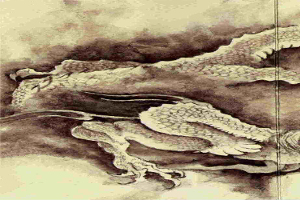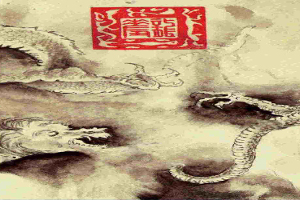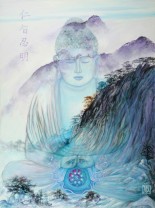 I recently read an article that was in essence a summary by the author of his book Trying not to Try (publication date: 3/4/2014). I really enjoyed the article and will be buying the book just as soon as it is published as it has some fascinating insights into Daoist thinking and parallels with rationalist scientific thinking. Increasingly I see less and less of a distinction between the two systems of thought so its interesting to try and draw comparisons between the different terminological distinctions they each make.
I recently read an article that was in essence a summary by the author of his book Trying not to Try (publication date: 3/4/2014). I really enjoyed the article and will be buying the book just as soon as it is published as it has some fascinating insights into Daoist thinking and parallels with rationalist scientific thinking. Increasingly I see less and less of a distinction between the two systems of thought so its interesting to try and draw comparisons between the different terminological distinctions they each make.
I am not sure I agree one hundred percent with everything presented in this article but there are lots of useful insights here. For example I like the metaphor of the Jazz pianist learning scales so that the playing disappears and then improvisation is possible. There is lots here that resonates with Heidegger, a 20th Century German philosopher whose ideas also seem congruent with that of Daoism. He talks about things being present-at-hand to us i.e. they are in the mind and need to be thought about to do them, if we have to think when we use it we might make a mistake of not be able to do the task at hand. As compared to what he calls ready-at-hand i.e. the thing disappears, we don’t think about it we are just involved with it when we use it. Heidegger’s famous example is the hammer
“it is ready-to-hand, we use it without thinking. In fact, if we were to look at it as present-at-hand, we might easily make a mistake. Only when it breaks or something goes wrong might we see the hammer as present-at-hand, just lying there. Only a later understanding might come to contemplate a hammer as an object” (wikipedia).
The article talks about how we can apply this idea to mindfulness. The way in which after practising endlessly we can slip into harmony with the activity or thing we wish to be involved with – the kind of relaxed but vigilant mode we enter into when we’re fully absorbed in a complex activity – is how the author of the article describes it. We practise mindfulness in order to be able to slip into a state of active conscious awareness (the monkey mind) so that our deeper consciousness can take over.
This way of thinking can also be applied to Tai Chi training just as easily. Forms are like scales on a piano. We practice them over and over not for their own ends. After all tai chi is not the forms much to the surprise of many beginners. Forms just teach us to move in a new way and to get in touch with the internal feelings and to moving in a mindful way. We practice them present-at-hand at first then after 10,000 times we are able to do them ready at hand (yes that is the official definition of being an expert by the way).
What I disagree with in the article is the rather simplistic formulation of hot mind and cold mind. The idea that the subconscious is the root of impulses and uncontrollable desires or urges doesn’t sit we’ll with my way of thinking about these things. Yes there are subconscious mechanisms at play but that can equally attributed to other automated body systems. Take the desire for sugar for example – this is not something that is rooted in subconscious mind but is a result of mechanisms of the body, imbalances of chemicals and other factors which then generate impulses. As we learn to quiet the monkey mind which to me is the hot mind, d on’t we then learn to let it’s raging chaos drift pass our deeper intention. Isn’t a lot of what we seek to do in meditation about tapping into that deeper quiet mind which is not at all hot.
Reintegrating all of the body and mind(s) into one. It’s two simple to delineate a good and bad mind in a way that to me just replicates that Cartesian dualism that this article, as with the philosophy of Heidegger attempts to do away with. The bad body mind and clever conscious mind – its far too simplistic a model even though I love simplicity and admire Daoism’s goal of simplicity. I think the monkey mind, the conscious mind, is just a tool, just part of us. A part that we so easily identify with as us, where as us is much deeper. It surely is the monkey mind that responds to the urges and stimulating of the bodies autonomic systems. It does so without thinking and by quietening that mind we are able to gain access to a more thoughtful reflective self which can observe and manage all of this chaos. Anyway that is how it seems to me.
As I say though this is a fascinating article full of insights about Daoism and I have put the book on my reading list. I guess what I am saying is be careful of science and western science at that, when it tries to stake a claim for Daoism and other ancient traditions.
Simplicity is often a sign of truth but truth is not always quite so simple.
Read the full article here: Trying Not to Try – Modern science and Chinese philosophy tell us similar stories about how we think.
Slingerland, E., 2014. Trying Not to Try: The Art and Science of Spontaneity. Crown Publishing Group.
A deeply original exploration of the power of spontaneity – an ancient Chinese ideal that cognitive scientists are only now beginning to understand – and why it is so essential to our well-being.
Image by artist Imago Dei – you can see more of the artists work and buy prints: HERE
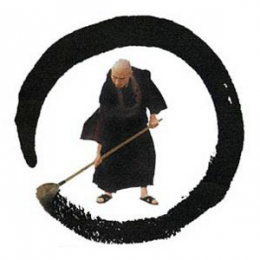






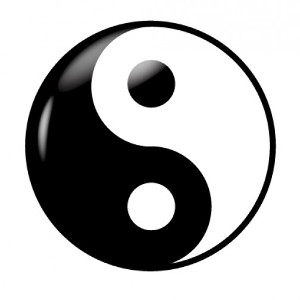 China Tai Chi Guide
China Tai Chi Guide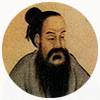 Five Elements Academy
Five Elements Academy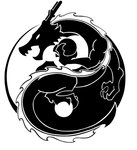 Long Tou Shan Tai Chi School
Long Tou Shan Tai Chi School Seven Stars Internal Arts
Seven Stars Internal Arts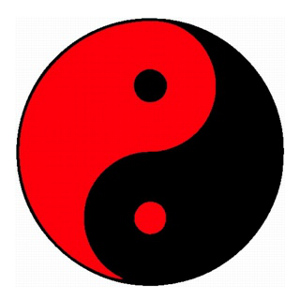 Traditional Tai Chi School
Traditional Tai Chi School Wandering Dao, China
Wandering Dao, China